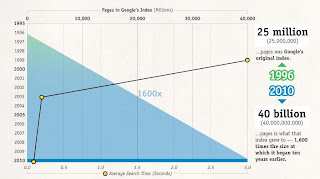Bigtable: A Distributed Storage System for Structured Data
Abstract
Bigtable is a distributed storage system for managing structured data that is designed to scale to a very large size petabytes (1 PB = 1,000,000,000,000,000 B = 10005 B = 1015 B) of data across thousands of commodity servers. Many projects at Google store data in Bigtable, including web indexing, Google Earth and Google Finance. These applications place very different demands on Bigtable, both in terms of data size (from URLs to web pages to satellite imagery) and latency requirements (from backend bulk processing to real-time data serving). Despite these varied demands, Bigtable has successfully provided a flexible, high-performance solution for all of these Google products. Since Bigtable concept has been developed by Google and currently used only between the Google boundaries.
Introduction
Bigtable is designed to reliably scale to petabytes of data and thousands of machines. Bigtable has achieved several goals by covering wide applicability, scalability, high performance, and high availability. Bigtable is used by more than sixty Google products and projects, including Google Analytics, Google Finance, Gmail, YouTube,Orkut, Personalized Search, Writely, and Google Earth. These products use Bigtable for a variety of demanding workloads, which range from throughput-oriented batch-processing jobs to latency-sensitive serving of data to end users. The Bigtable clusters used by these products span a wide range of configurations, from a handful to thousands of servers, and store up to several hundred terabytes of data. Bigtable does not support a full relational data model; instead, it provides clients with a simple data model that supports dynamic control over data layout and format, and allows clients to reason about the locality properties of the data represented in the underlying storage. Data is indexed using row and column names that can be arbitrary strings. Bigtable also treats data as uninterpreted strings, although clients often serialize various forms of structured and semi-structured data into these strings. Clients can control the locality of their data through careful choices in their schemas. Finally, Bigtable schema parameters let clients dynamically control whether to serve data out of memory or from disk.
Architecture
Since Bigtable is not a relational database so neither it support joins nor rich SQL-like queries. Each table is a multidimensional sparse map. Tables consist of rows and columns, and each cell has a time stamp. There can be multiple versions of a cell with different time stamps. The time stamp allows for operations such as “select ‘n’ versions of this Web page” or “delete cells that are older than a specific date/time.”
In order to manage the huge tables, Bigtable splits tables at row boundaries and saves them as tablets. A tablet is around 200 MB, and each machine saves about 100 tablets. This setup allows tablets from a single table to be spread among many servers. It also allows for fine-grained load balancing. If one table is receiving many queries, it can shed other tablets or move the busy table to another machine that is not so busy. Also, if a machine goes down, a tablet may be spread across many other servers so that the performance impact on any given machine is minimal.
Tables are stored as immutable SSTables and a tail of logs (one log per machine). When a machine runs out of system memory, it compresses some tablets using Google proprietary compression techniques (BMDiff and Zippy). Minor compactions involve only a few tablets, while major compactions involve the whole table system and recover hard-disk space. The locations of Bigtable tablets are stored in cells. The lookup of any particular tablet is handled by a three-tiered system. The clients get a point to a META0 table, of which there is only one. The META0 table keeps track of many META1 tablets that contain the locations of the tablets being looked up. Both META0 and META1 make heavy use of pre-fetching and caching to minimize bottlenecks in the system.
Implementation
BigTable is built on Google File System (GFS), which is used as a backing store for log and data files. GFS provides reliable storage for SSTables, a Google-proprietary file format used to persist table data.
Another service that BigTable makes heavy use of is Chubby, a highly-available, reliable distributed lock service. Chubby allows clients to take a lock, possibly associating it with some meta data, which it can renew by sending keep alive messages back to Chubby. The locks are stored in a file system-like hierarchical naming structure.
There are three primary server types of interest in the Bigtable system:
- Master servers: Assign tablets to tablet servers, keeps track of where tablets are located and redistributes tasks as needed.
- Tablet servers: Handle read/write requests for tablets and split tablets when they exceed size limits (usually 100MB – 200MB). If a tablet server fails, then a 100 tablet servers each pickup 1 new tablet and the system recovers.
- Lock servers: Instances of the Chubby distributed lock service. Lots of actions within BigTable require acquisition of locks including opening tablets for writing, ensuring that there is no more than one active Master at a time, and access control checking.
“Finally, we have found that there are significant advantages to building our own storage solution at Google. We have gotten a substantial amount of flexibility from designing our own data model for Bigtable. In addition, our control over Bigtable’s implementation, and the other Google infrastructure upon which Bigtable depends, means that we can remove bottlenecks and inefficiencies as they arise.”
